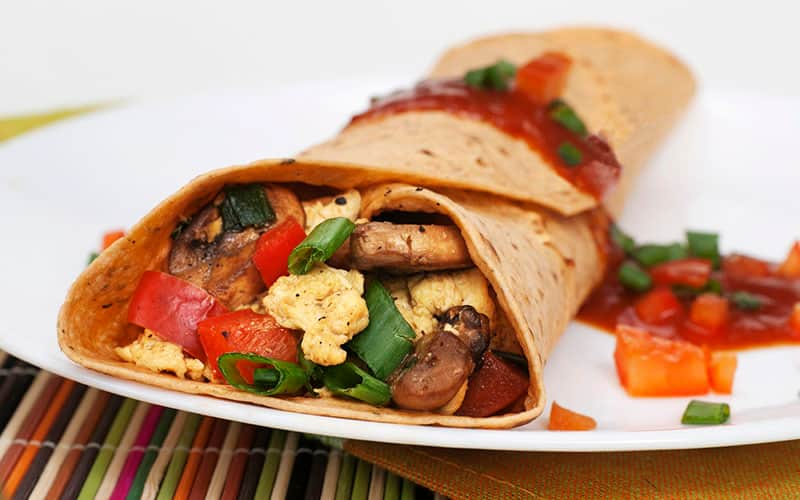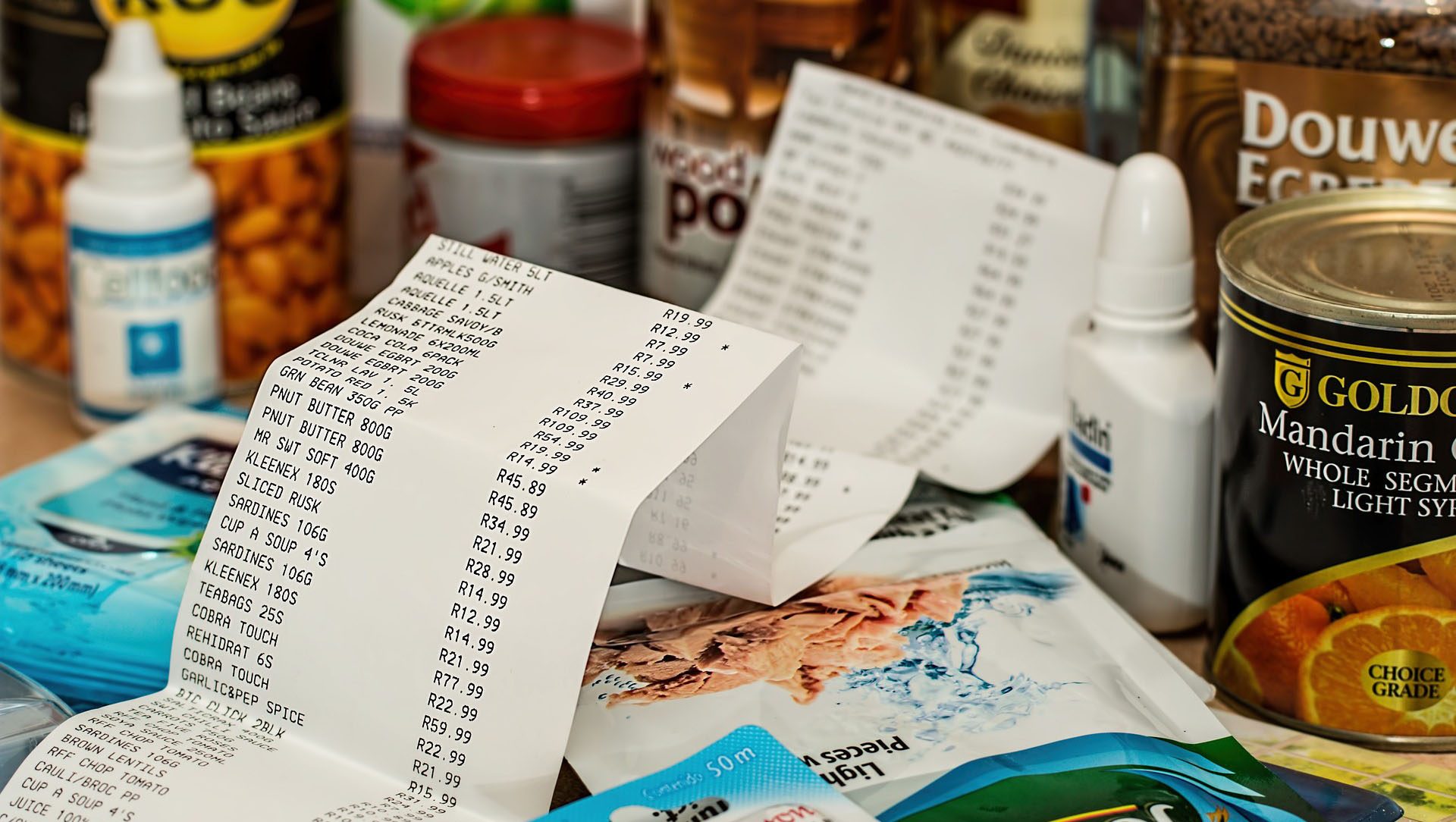
Build a Better Breakfast for Optimal Performance
A balanced breakfast rich in carbohydrates and proteins regulates appetite and helps you feel satisfied, putting you on track to reach your fueling and nutrition goals.
Resources for
Follow USAVolleyball

Whether inflation is increasing the cost of your normal trip to the grocery store or you’re suddenly buying a lot more food for growing athletes, you may be looking for ways to save some money while buying food. Fortunately, you don’t need to sacrifice nutrition or taste in order to slash your grocery budget. It takes a bit more planning, and in some cases, a bit more work on your part. But it also can lead to the discovery of new favorite foods, new recipes, and enjoyable meals.
TrueSport Expert Kristen Ziesmer, a registered dietitian and board-certified specialist in sports dietetics, shares a few simple ways to drop your grocery budget this week.
The fastest way to save money is by using what you already have at home—which also helps empty out your cabinets in the process. If you’re out of your normal dinner staples three days before your normal grocery shopping day, Ziesmer suggests challenging yourself to actually use what’s left in the fridge and the pantry.
“As soon as you run out of something, don’t run to the store to get it. If you’ve run out of yogurt, you can go a few days without it. Set a time for when you go to the store and stick to it. Most of us have plenty of food still in the fridge or in our cabinets, we’re just not used to using it,” she says.
“You may not have your normal meal, but do you have frozen broccoli and some frozen chicken? Then you have a meal! Start with what you already have: Not only will you use up those extras that have been languishing in your cupboards, you may discover some new recipes in the process, and you’ll save money by avoiding yet another grocery store trip. I think many of us are used to just buying X, Y and Z, and not looking at what we already have at home.”
She recommends the app Super Cook, which allows you to input the ingredients you do have on hand and then generates recipe options that use those.
It might seem odd to consider spending money when talking about slashing a grocery budget, but one-time spends can actually save money in the long run. Ziesmer recommends kitchen appliances like a pressure cooker, which not only speeds up meal prep, but can also make it easier to use dried beans versus canned—which is much cheaper. It also allows you to use scraps to create nutritious broths. Ziesmer recommends using vegetable scraps from a salad and the carcass of a whole chicken to make a chicken broth using the pressure cooker.
An extra chest freezer is another great tool since it allows you to store bulk frozen meat, fruits and vegetables. And depending on the amount of space in your kitchen, options like a Soda Stream can replace buying cans of seltzer while a bread machine can save you from buying bread from the store on a weekly basis. Ziesmer notes that the bread machine is especially helpful for those with a gluten intolerance since gluten-free bread is often extremely expensive to buy but can be easily made in a bread machine.
Finally, investing in glass food storage containers (like mason jars for yogurt parfaits or trail mix) and silicone reusable bags can take the place of buying new plastic sandwich bags and cheap plastic storage containers.
Ziesmer suggests finding second-hand items if you’re on a tight budget but are interested in a pressure cooker, bread machine or chest freezer.
Before you plan your trip to the store or start ordering dozens of pricey gadgets, do a quick audit of your last few grocery shop excursions by looking over the receipts. Ziesmer suggests looking at where you are spending the most money. Some of these items may be unavoidable, but ask yourself:
-Could this be bought in bulk?
Things like eggs, nuts, dried fruit and even frozen produce may be less pricey when bought in bigger sizes. You can check by looking closely at the tags beneath each item on grocery store shelves to see the price per unit of measure, and you can compare it to the bulk buy option to see if the savings make sense.
-Could I make this myself?
Items like granola, gluten-free bread or almond milk may seem difficult to make, but once you learn how and get the right equipment, it’s easy.
-Is there a cheaper option available?
This could be buying frozen berries versus fresh, but it could also mean looking to see if there’s a store brand that has the same—or even higher quality—ingredients without the brand name.
-Is there a swap you could make for something cheaper?
If baking gluten-free bread is beyond your time capabilities but the $8 loaves are hurting your budget, consider if your athlete could instead use corn tortillas, which are often $5 for more than 50 tortillas The same applies to cuts of meat or types of nuts and seeds.
Bulk buying isn’t for everyone and it’s not for every food. “Buying foods that you eat most often in bulk, like meats, frozen fruits, vegetables and nuts, can save money,” says Ziesmer.
Stick to staples, including things like olive oil, eggs, or dairy that will be used long before its expiration date.
She also suggests skipping pre-packaged foods that are bought in bulk, like packets of trail mix. Instead, bulk buy your athlete’s favorite dried fruits, pretzels and nuts to mix your own. It’s more cost-effective and it ends up being more in line with your athlete’s food preferences.
Often, in-season produce is significantly less pricey than it will be in the offseason. Ziesmer suggests taking advantage of eating fruits and vegetables when they’re in season to save money and to vary the types of produce your family is eating. But she also adds that if you have extra freezer space, buying favorite fruits and vegetables while they’re on sale and in season and then freezing them is a great way to save money.
“For example, there’s a strawberry patch really close to our house, so I buy a whole bunch of their strawberries, cut the tops off, and then freeze them so we can use them throughout the year,” she says. “It’s cheaper plus it’s healthier since the fresher the produce is, the more nutrients it contains.”
Your grocery receipt audit can also tell you whether you’re an impulsive shopper or not. If your audit showed that you tend to overspend in the grocery store simply because you spot foods that seem interesting and drop them into your cart without considering the cost, you may be best served to shop with a strict grocery list—no exceptions or additions allowed—or even do your grocery shopping online and pick it up at the store. This also pushes you to meal-plan and leads to less food waste.
Takeaway
To cut your grocery costs, you have to understand where you’re spending the most and ask yourself where you can make changes. It may be by buying in bulk, it may mean relying more on frozen foods, or it may simply mean shifting to a more seasonal approach to food.
About TrueSport
TrueSport®, a movement powered by the experience and values of the U.S. Anti-Doping Agency, champions the positive values and life lessons learned through youth sport. Backed by U.S. Congressional mandate, TrueSport inspires athletes, coaches, parents, and administrators to change the culture of youth sport through active engagement and thoughtful curriculum based on cornerstone lessons of sportsmanship, character-building, and clean and healthy performance, while also creating leaders across communities through sport.
For more expert-driven articles and materials, visit TrueSport’s comprehensive collection of resources.
This content was reproduced in partnership with TrueSport. Any content copied or reproduced without TrueSport and the U.S. Anti-Doping Agency’s express written permission would be in violation of our copyright, and subject to legal recourse. To learn more or request permission to reproduce content, click here.